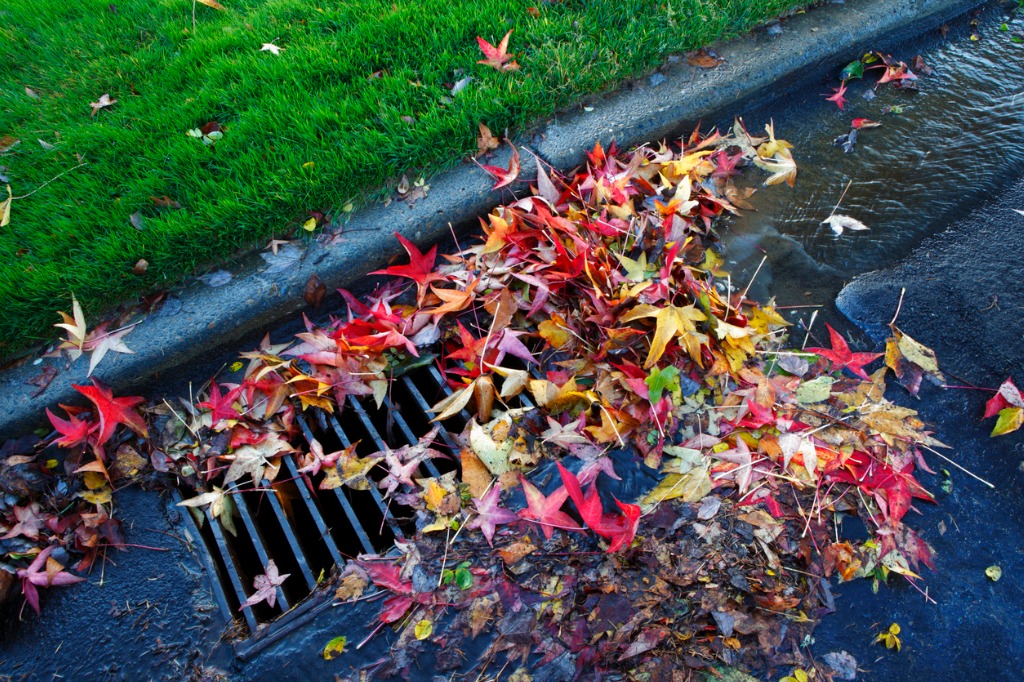Parking lot drainage and maintenance are important because the way a parking lot looks contributes significantly to how customers and employees perceive your organization. A well-maintained parking lot improves the curb appeal and value of a facility.
However, there is more to parking lot maintenance than just aesthetic appeal. Parking lot maintenance enhances safety for everyone who uses the lot and thus, reduces your liability if injuries or accidents occur.
Holes and cracks in the parking lot surface can contribute to falls and injuries and puddles and pooling water can create safety issues as well as degrade the parking lot’s surface. Effective maintenance maximizes usable parking space, increases your parking lot’s longevity, and reduces long-term costs.
Why Your Parking Lot Needs Proper Drainage
Water may be incredibly important to mankind, but it is also the greatest enemy to asphalt parking lot surfaces. Water can seep into cracks and cause serious damage that can destroy a parking lot, especially if drainage is not properly handled. You don’t want pedestrians trudging through or slipping and falling in standing water. You also don’t want cars to slide through pools of water, which can cause accidents and injuries.
Water that stands on a parking lot surface can destroy the bonds that hold the asphalt together, which can disintegrate the top layer of the pavement. Water that seeps into an asphalt pavement surface will cause potholes and cracks that will worsen significantly over time.
An effective parking lot drainage system will keep water off your lot, ensuring that the surface lasts longer. It prevents unsanitary water from standing on the lot, creates a safer environment for customers and employees, and contributes to a good customer impression.
 Signs That Your Parking Lot Has Drainage Issues
Signs That Your Parking Lot Has Drainage Issues
Signs that your parking lot has drainage problems include puddles or pools of water, dirty or dusty-looking areas where pools of water have evaporated, flows of water down the middle of the parking lot, and areas of rocks, sand, or other debris that have accumulated in various spots in the parking area.
You can tell that your parking lot has been damaged by water if you see cracks in the asphalt surface or if the top layer of asphalt has started eroding (also referred to as raveling). If it looks like your asphalt is “bleeding,” it’s because the binding agent has risen to the surface, which indicates that the aggregate is separating.
These signs indicate that your parking lot has drainage issues. It is crucial that you address these issues as soon as possible. Otherwise, they could cause further issues down the road, leading to more extensive (not to mention expensive) repair work.
How to Fix Drainage Problems
You can take the following actions to address drainage issues.
First, correct the slope of the parking lot so that water slopes off the parking lot’s surface to the perimeter edge of the lot. To effectively drain water off the lot, the slope should be 2-5 percent.
Second, add internal curbs that will direct the flow of water through the asphalt and push it towards the perimeter of the lot. This will limit standing water by directing it to a place where it can be absorbed.
Third, install runoff drains or trench drains that will take the water away from the parking area.
If damage has already occurred, the following actions can correct asphalt damage and help even out the surface to prevent further water pooling.
Crack Sealing. Cracks can be sealed to prevent further water from penetrating into the asphalt and causing additional damage. Crack sealing helps maintain the structural integrity and appearance of the asphalt.
Sealcoating. You can sealcoat your parking lot to fill in surface damage and protect the asphalt from UV rays, rain, ice, snow, and vehicle fluids. We recommend sealcoating asphalt surfaces every two to three years to protect them from the elements. New asphalt surfaces should be sealcoated immediately to prevent it from drying out. Sealcoating provides a beautiful finish for asphalt pavement.
Patching. Patching cracks and holes will prevent water from penetrating the surface of the asphalt, which can cause more serious cracks to form. This helps maintain the integrity and performance of the asphalt surface.
Pothole Repair. Heavy rains, heavy vehicular traffic, and winter weather all combine to create potholes in asphalt parking lots, and those can be disastrous to the parking lots. Repairing potholes promptly can prevent serious accidents and injuries.
Resurfacing. If asphalt damage is too extensive for remediation and repair work, then resurfacing may be needed. This can be the case when there are severe ruts, broken asphalt areas, or major cracks that can’t be repaired.
In general, a regularly scheduled program of asphalt maintenance should be established to prolong the life of your asphalt, provide safety for the users of your parking lot, preserve your lot’s appearance, and save money on repairs.
What Can McConnell & Associates Do for You?
McConnell & Associates has been protecting, restoring, beautifying, and protecting surfaces throughout the Midwest since 1965. We offer industry-leading services, including asphalt repair and restoration. We also resurface tennis courts, install new running tracks, and protect sports surfaces with sealcoating.
Our comprehensive asphalt services include installation, maintenance, repair, sealcoating, crack-filling, patching, milling, paving, overlays, and striping. If you require any of our services, give us a call at 1 (800) 779-6066 to speak with one of our dedicated team members.


 Signs That Your
Signs That Your .png)


